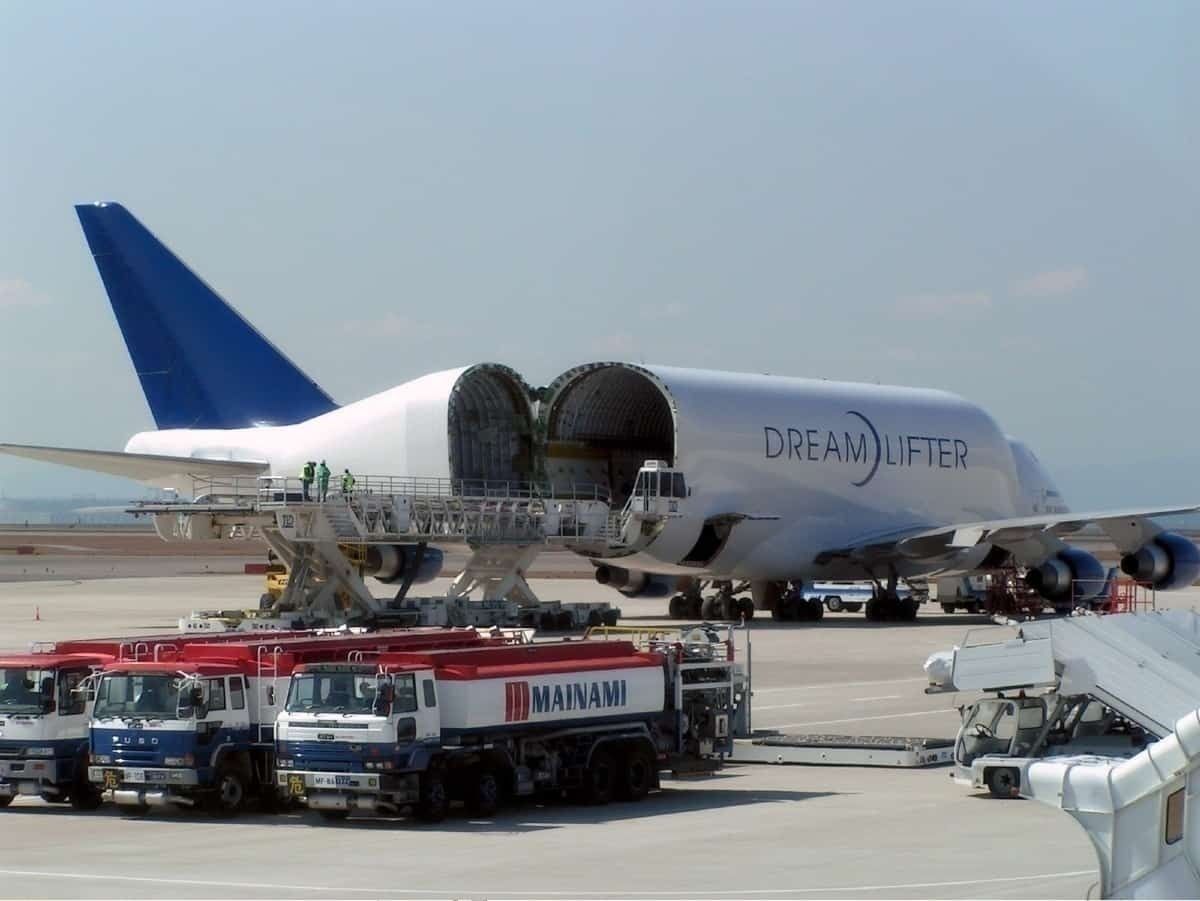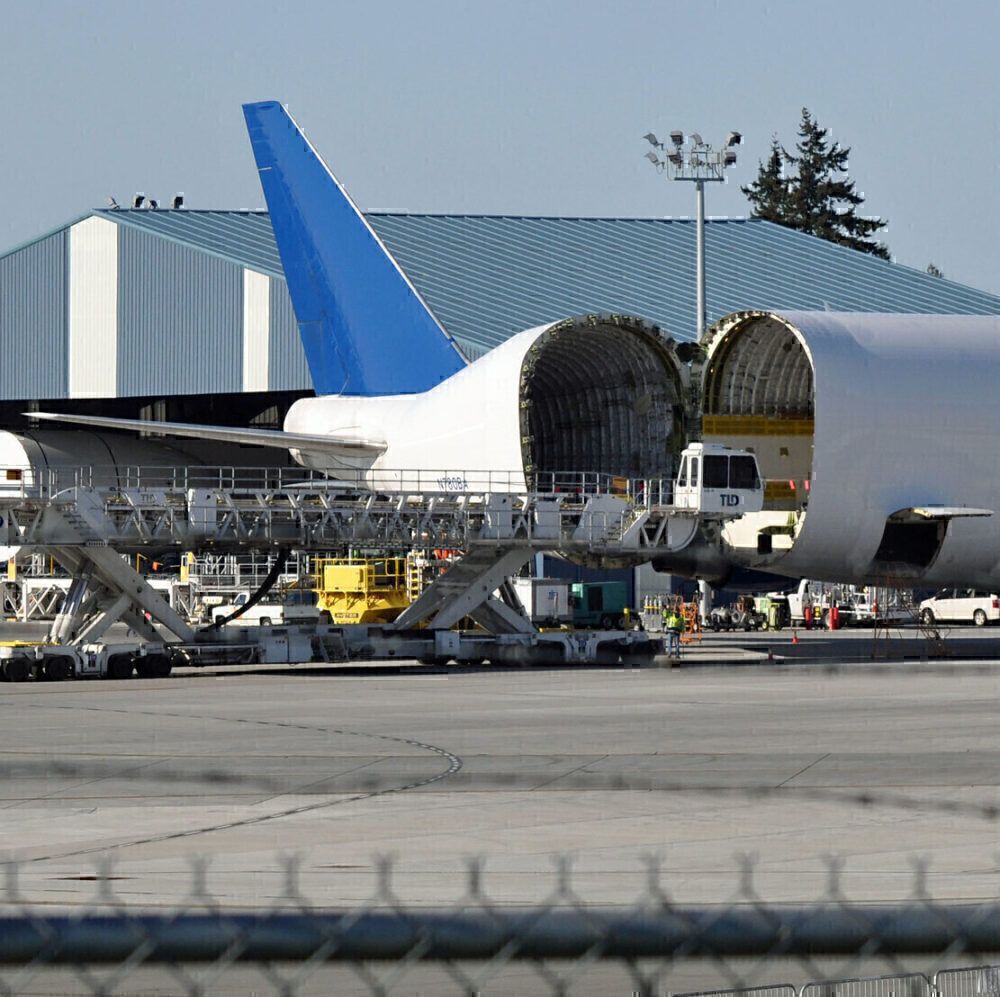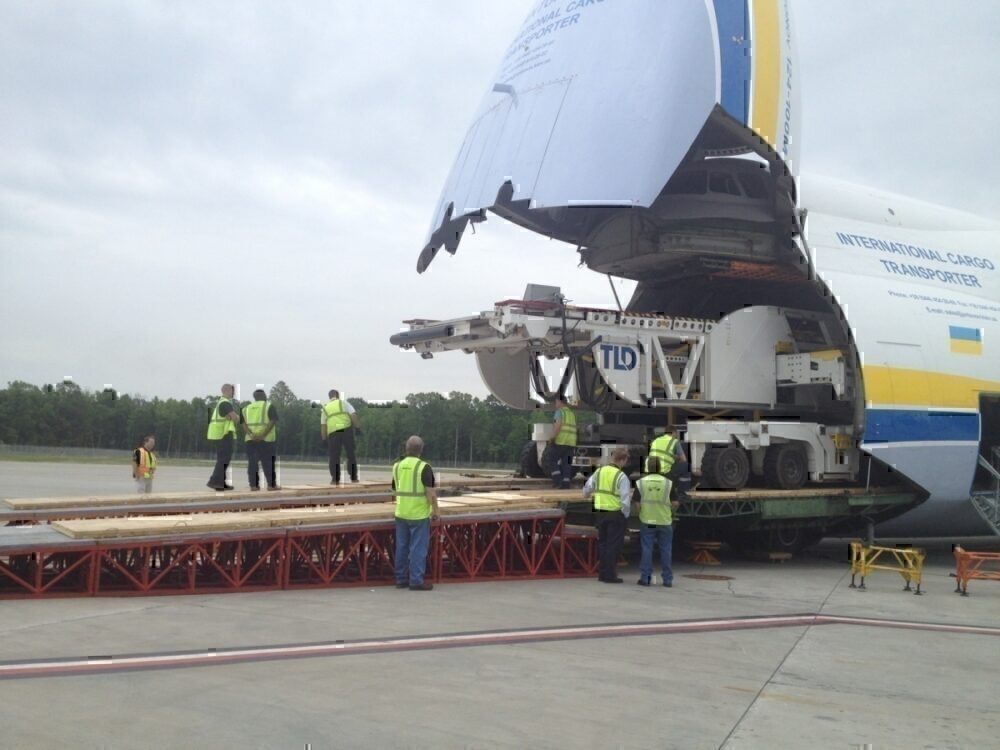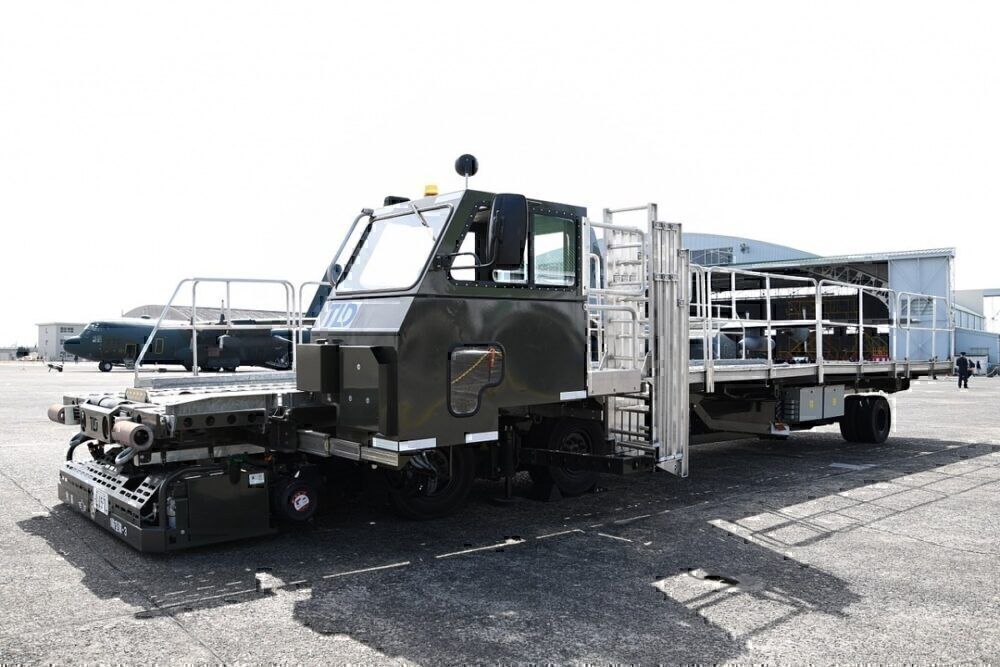While much of our focus is on commercial aircraft, it's sometimes nice to take a look further back behind the scenes at the machines and processes that are part of building those big jets. Part of the 787 assembly process requires components to be flown from around the world to the United States using a modified 747. But with large components like wings and fuselage sections, how exactly does Boeing load its Dreamlifter?
The DBL by TLD
The answer to getting the Dreamlifter loaded goes by the name 'DBL,' which has lovingly been given the nickname "Darn Big Loader." That name doesn't seem to be official, but it is used quite commonly. Whatever you want to call it, this impressive machine measures 35.96 m (118 ft 1 in) and holds the Guinness World Record title of 'longest aircraft loader in the world.' A title which was officially awarded to it 12 June 2006.
The DBL is manufactured by a French company that goes by the name of TLD. The letters come from the name Teleflex Lionel-Dupont, however, this is no longer in use. TLD has since become a multinational corporation with manufacturing sites located around the world (France, China, United States). In fact, the DBL's birthplace is actually in Sherbrooke, Quebec, Canada.
A Boeing-TLD partnership
According to Aviation Pros, the DBL's size equates to one third the length and half the width of a football field. Interestingly, the loader was designed and built in less than 15 months, specifically for Boeing's 787 program.
This meant that Boeing and TLD engineers had to work together on designing the machine, which began around the spring of 2004. This eventually led to the contract being issued to TLD in February of 2005. On the Boeing side, the overall direction was provided to TLD. This included the operational concept, interface and control system requirements. With these requirements and parameters, TLD went to work on the design.
One example requirement was that the platform could not flex. This requirement prevents unintentional flex of any airframe components it would be lifting. The DBL also has the ability to rotate and turn 360 degrees via its “crab” steering system.
"Designing and building a cargo loader of this magnitude is a unique proposition...A robust transportation system is essential to meeting the customer demand for the Dreamliner and a safe and efficient cargo loader is critical.” - Mike Bunney, Director of Global Logistics for the Boeing 787 Dreamliner program
The Dreamlifter fleet has been carrying 787 components from all over the world since manufacturing started in 2008. Parts make their way to Boeing's final assembly facilities in Everett, Washington and North Charleston, South Carolina, coming from as far away as Foggia, Italy and Nagoya, Japan.
In fact, Boeing outlines the Dreamlifter's routes on its website:
- Section 41 from Wichita, KS to Everett, WA
- Joined section 47-48 from North Charleston, SC to Everett, WA
- Joined Section 43-46 from North Charleston, SC to Everett, WA
- Horizontal Stabilizer from Foggia, Italy to Everett, WA
- Wing Box from Nagoya, Japan to Everett, WA
- Section 41 from Wichita, KS to North Charleston, NC
- Horizontal Stabilizer from Foggia, Italy to North Charleston, NC
- Section 44 from Grottaglie, Italy to North Charleston, NC
- Wing Box from Nagoya, Japan to North Charleston, NC
- Section 11/45 from Nagoya, Japan to North Charleston, NC
- Section 43 from Nagoya, Japan to North Charleston, NC
Aviation Pros also reported that a 'DBL' cargo loader is based at each facility with an operator seated in a cab atop the giant loader driving the machine to the Dreamlifter as needed. To get the job done, sensors will perfectly align the DBL to the aircraft's cargo-handling system to ensure safe loading and unloading.
Conclusion
With its 32 independently controlled tires on 16 steerable axels, the DBL is quite an engineering marvel - one that has had a key role to play in the 787's manufacturing process. This is certainly something worth thinking about the next time you step on to a Dreamliner. Hopefully, that won't be too long from now.
What do you think of this massive machine? Is it an impressive engineering marvel or just a means to an end? Let us know in the comments!
Our special thanks to F. Stephan Cerchia Manager, International Trade and Transportation TLD America (RET) for the inspiration behind this story as well as some of the photography.




